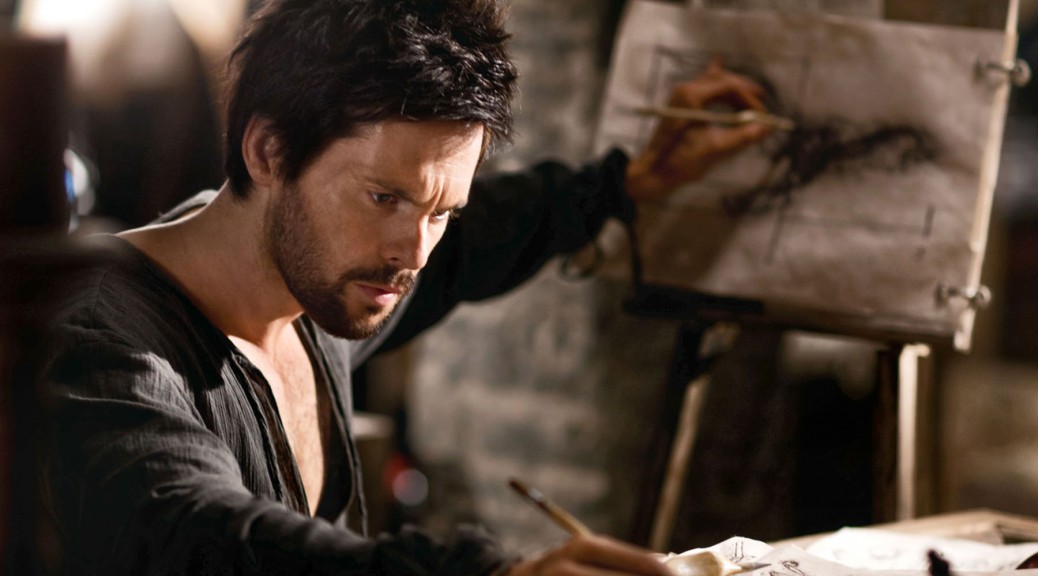Immersed in the allure of Italy, I took to reading Thomas Mann’s Death in Venice, prompted by another Italian-set story: Da Vinci’s Demons. The series is a fascinating dive into Italian history, centred on Leonardo Da Vinci, the celebrated artist, inventor, musician, engineer and anatomist. The demons in the title allude to a supernatural element woven through the series, suggested in the form of powerful visions and demonic possession. Yet, interestingly, there are times when it comes off as a kind of Italian Sherlock Holmes or 15th century Jonathan Creek, with a protagonist hell-bent on explaining any strange occurrences through reason and rational thinking.
Leonardo’s passion and pursuit of knowledge are breathlessly captured in an energised performance by Tom Riley. He is surrounded, throughout the series, by a diverse set of characters, brought to life by an array of English actors. Having honed her craft on stage, the most notable is Lara Pulver, as Clarice Orsini, in a measured performance as the wife of Lorenzo Medici.
However, it is Tom Bateman, as Giuliano Medici, who is the biggest surprise in the cast, thanks to a character which has been allowed to develop seamlessly throughout the story. His characterisation is at first uncomfortably irritating, all flapping eyebrows and vicious scowls. This is partly due to the infuriating character he is saddled with playing; but as the character develops, so does the performance.
Minor characters come in the form of artists such as Botticelli and royals like Castile’s Queen Isabella, turning the series into a name-dropping parade of European history. But all are integral to the story, no matter how small the part they have to play, underscoring the complexity of the social-political milieu, while providing depth to the main players.
Although the cinematography and art direction gloriously capture the city of Florence through breath-taking exterior shots, it comes with the oh-so-early-21st century veneer of computer generation. But this is not an exclusive fault, and is rescued by its other, astonishing visual effects. Leonardo’s thoughts are beautifully rendered in a graceful swirl of drawings which are animated on screen and intricately woven into the live action.
Furthermore, the visceral contrast between living, breathing, doughy-fleshed nudes and the rotting corpses Leonardo dissects, is enthralling. The latter is just one of many historical flourishes with which the script is imbued.The story may be a self-confessed fictionalisation, but the writers still made time to weave in the lore of Leonardo’s love for freeing caged birds, his vegetarianism, the dismissive father, a variety of radical inventions and the fact that he was not always the wizened old man whose image we know so well, but a rather handsome youth in his time.
Produced by Starz, the series is far more compelling than the company’s latest outing, Black Sails. Da Vinci’s Demons combines fast-paced action, dark romance, visual splendour and impassioned philosophy to produce a kaleidoscope of drama that pays tribute to the vision of a genius.
Originally published on Amazing Picture Box
Image source
